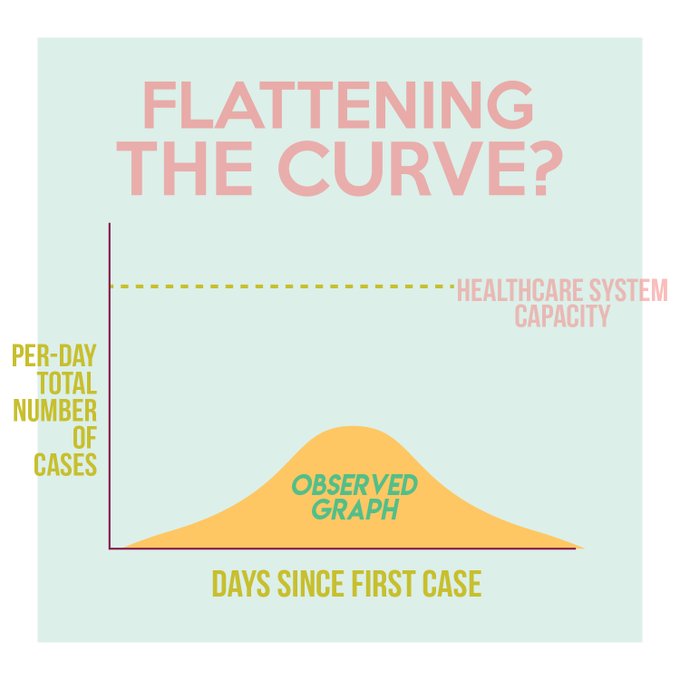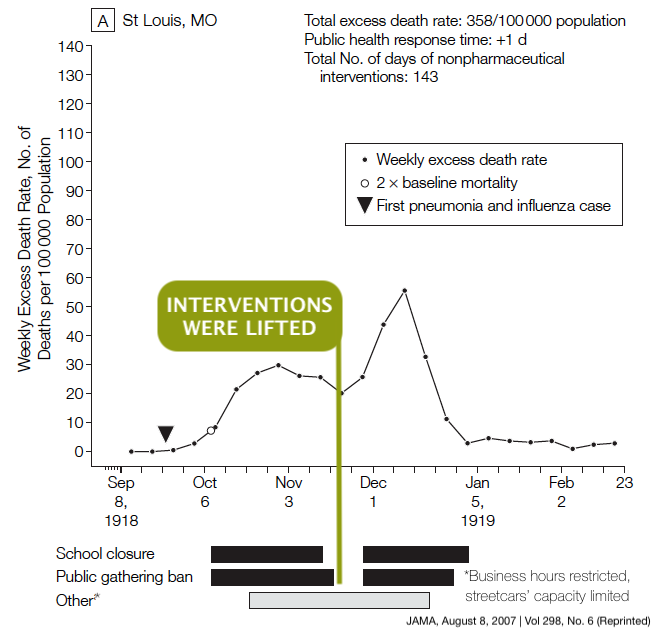Do you actually know what the “curve” in “flattening the curve” is?
Plotted against time is it the change in:
a. The cumulative number of cases since Day 1
b. The number of new cases per day
c. The per-day total number of cases
If you chose B, you answered incorrectly. The change in the number of new cases with respect to time only partly reflects the actual rate of transmission.
While the rate of transmission from having new cases is a factor that could burden healthcare, it is an incomplete picture—and is not the actual curve we want to flatten.
A is also wrong. While most “Flattening the Curve” graphs we see use “number of cases” for its y-axis, it is easily misinterpreted as the total—cumulative—number of cases since day 1.
This is wrong because it includes the cases which have recovered or died. These do not burden healthcare capacity anymore.
We contextualize “flattening the curve” in terms of healthcare system capacity. Thus, we need to remove from the tally the recoveries and the deaths—which don’t anymore contribute to burdening healthcare capacity. So we use the “per-day” total number of cases for the y-axis.
Now you might ask, what is the importance of choosing the correct curve to interpret? The correct curve measures the level of control of the situation. If we consider only the new cases (choice B) per day for the curve, we might think that the reduction in new cases is a good sign (well, it is, but it’s an insufficient sign); but if recoveries/deaths didn’t occur, bed capacity is still maxed out.
So don’t believe anyone who says the curve is flattening based solely on the REDUCTION IN NEW CASES.
What does it really mean when we “flatten the curve”?
Flattening the curve slows down the change in number of cases across time—i.e., reducing the slope from a steeper one to a shorter, “flatter” one.


Slowing down the rise in number of cases allows the healthcare system to muster enough time, energy and resources—bed capacity, PPE, ICUs, ventilators, able healthcare workers, drug and vaccine development—so that it is not overwhelmed.
We can think of the healthcare system capacity as a threshold line, above which patients do not get ideal care.
Flattening the curve is done by reducing the rate of transmission: via community quarantine, use of masks, social distancing, travel restrictions, handwashing, avoiding touching the face, seeking medical care, and case isolation.
Case isolation requires that cases be identified (by testing accurately, not merely via rapid tests) to isolate them from the rest of the community. Healthcare workers (HCWs) should ideally get tested, so that only the positive HCWs are isolated (and subtracted) from the pool of HCWs able to treat patients.
What does “flattening the curve” NOT mean?
Flattening the curve does NOT mean NOT TESTING so that the untested patients are not added to the graph; hence, the peak does not overtake the threshold.


Flattening the curve does not mean you are TOTALLY protected from getting infected. You could still get it from going outside unmasked, from giving up the methods we have learned about.
Flattening the curve does not mean lifting the lockdown prematurely, otherwise we could suffer the same fate as St. Louis during the 1918 flu pandemic.

Here we see that the premature lifting of community measures resulted in a surge of deaths when the rate was already starting to dwindle. Note that the Y-axis is the DEATH RATE, not the curve we have been talking about.
The less popular albeit equally important slogan “Raise the Line” shifts the healthcare capacity upward so that the curve doesn’t cross it.


This means increasing the healthcare capacity by: postponing non-emergency procedures, providing adequate PPE, supplying additional ventilators, equitable redistribution of resources, employing more personnel, and building makeshift hospitals or isolation centers, where the mild cases can be separated from their households.
So while we wait for the vaccines and repurposed drugs to be approved, let us FLATTEN THE CURVE, and RAISE THE LINE!
Featured Cover Photo by Edward Jenner from Pexels
Editor’s Note: This article has been republished in whole from a Twitter thread with permission from the author.
[Entry 305, The SubSelfie Blog]
About the Author:

Ben Anthony Lopez is currently finishing his MD PhD in Molecular Medicine. He has a bachelor’s degree in Molecular Biology and Biotechnology. He likes sharing his love for: science, coffee, productivity, and fitness.

One Comment Add yours